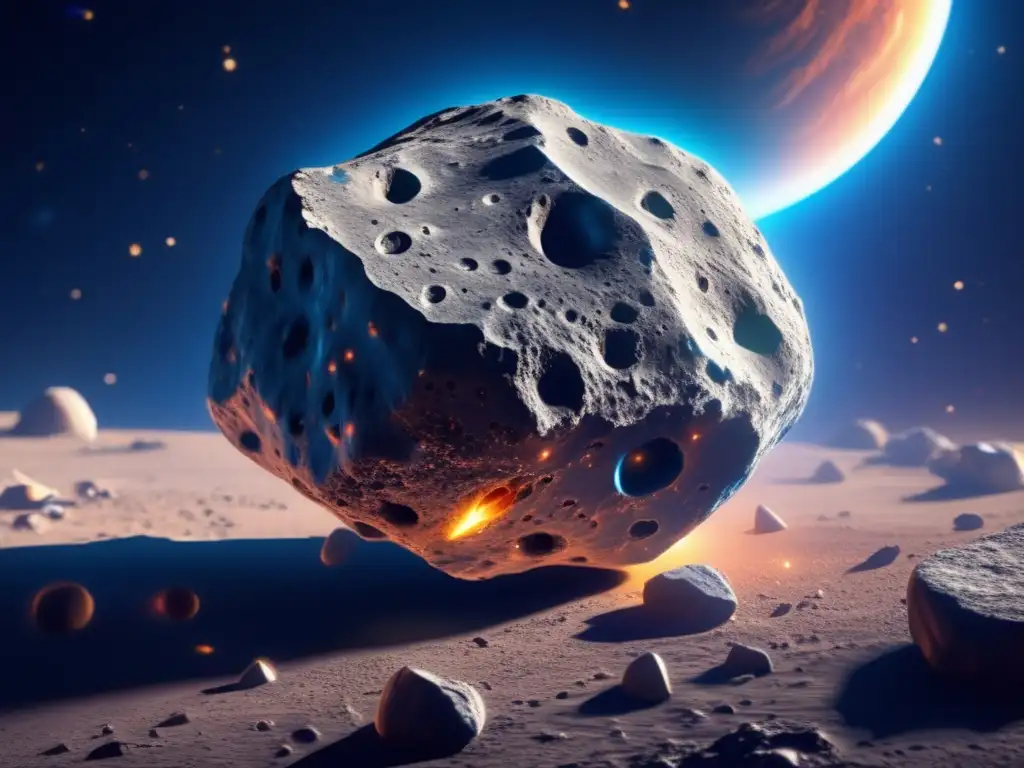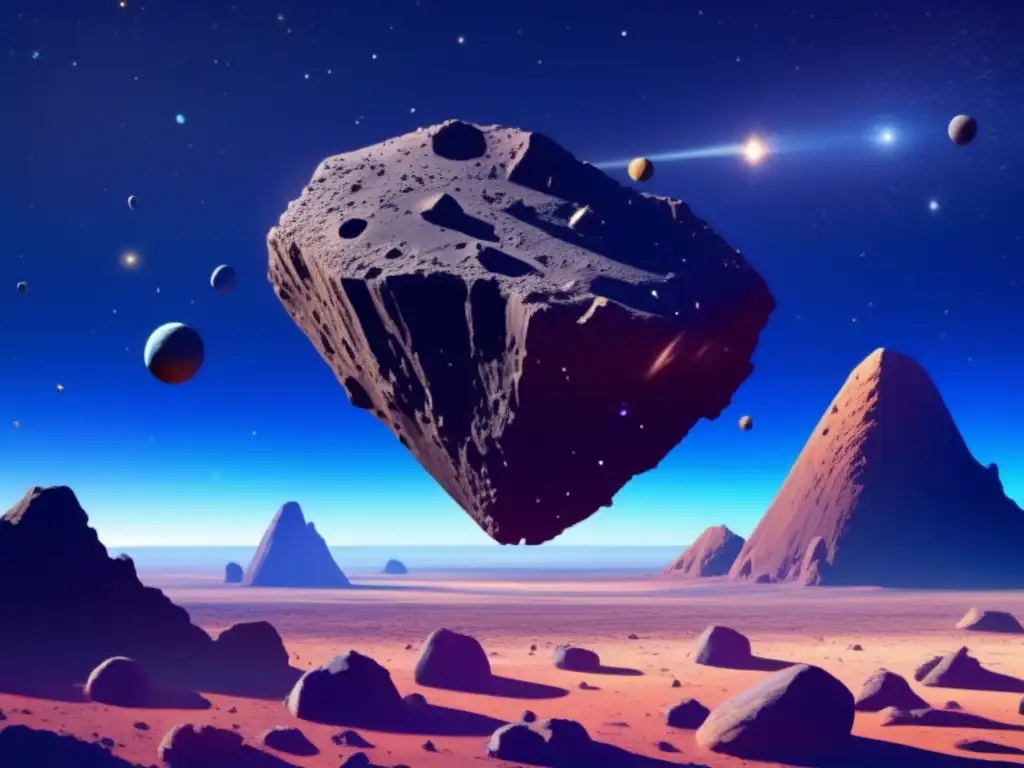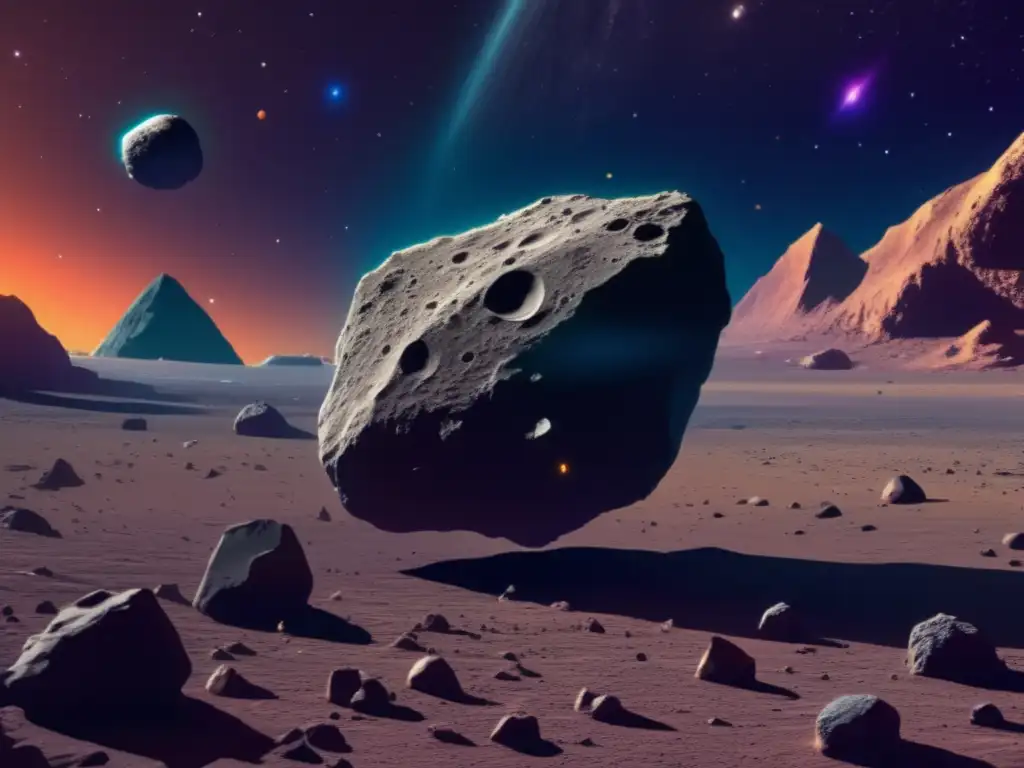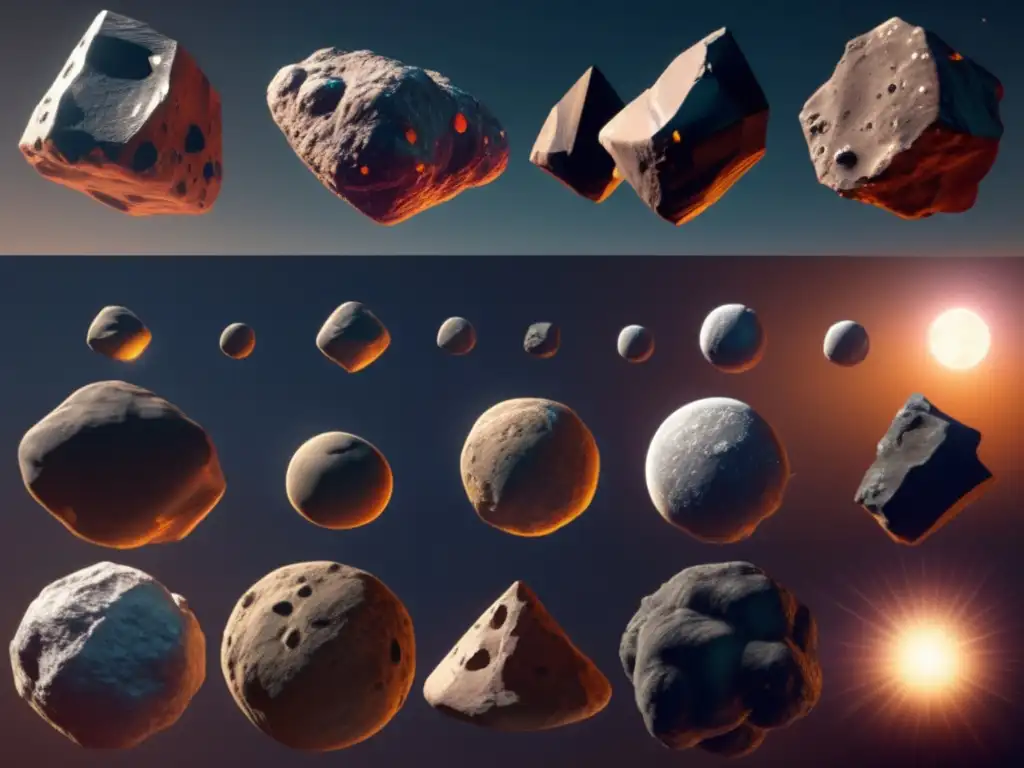Discovering The Spectral Classes Of Asteroids

Introduction
Studying asteroids can provide us with valuable insights into the formation and evolution of our solar system. One of the ways scientists categorize asteroids is by their spectral class, which is determined by analyzing the light they reflect. Spectral classes can reveal a lot about an asteroid’s composition, history, and even potential for resource extraction. In this article, we will explore the different spectral classes of asteroids and what they tell us about these fascinating celestial objects.
C-type Asteroids: The Carbon-rich Class

The Characteristics of C-type Asteroids
C-type asteroids are the most common spectral class, accounting for around 75% of all known asteroids. They are carbon-rich and believed to be remnants of the early solar system, making them highly valuable to study. These asteroids tend to have low albedos, which means they reflect less light than other asteroid types and absorb more heat.
Exploring the Composition of C-type Asteroids
C-type asteroids are composed of various minerals, such as iron, magnesium, and silicates. They also contain hydrated minerals, which suggest that water was present in the early stages of our solar system. In fact, some studies suggest that C-type asteroids may have delivered water and organic matter to Earth, making them potential sources of life's building blocks.
Potential for Resource Extraction
C-type asteroids are of great interest for resource extraction since they contain valuable materials like water, carbon, and precious metals. Their low albedos make them good candidates for mining because they absorb more sunlight and are easier to heat up, which makes it easier to extract volatiles like water and gas from their surfaces.
S-type Asteroids: The Stony Class

The Characteristics of S-type Asteroids
S-type asteroids are the second-most-common spectral class and have a higher albedo than C-type asteroids, which means they reflect more light. They are believed to have formed in the inner solar system between Mars and Jupiter and are typically smaller than C-type asteroids.
Exploring the Composition of S-type Asteroids
S-type asteroids are composed mostly of rock-forming minerals like olivine and pyroxene. Some studies suggest that they may contain traces of water, but not at levels as high as those found in C-type asteroids. They are also believed to contain metal-rich cores that could be valuable for resource extraction.
Potential for Resource Extraction
S-type asteroids may have limited potential for resource extraction compared to other classes since they are mostly rocky and have lower amounts of volatiles. However, their metal-rich cores could be valuable for extracting metals like iron, nickel, and cobalt, which are essential for manufacturing.
M-type Asteroids: The Metallic Class

The Characteristics of M-type Asteroids
M-type asteroids are the least common spectral class and have the highest albedo of all asteroid types, which means they reflect the most light. They are believed to be fragments from the metallic cores of larger asteroids that were shattered by collisions.
Exploring the Composition of M-type Asteroids
M-type asteroids are composed mainly of metals like iron and nickel, making them highly valuable for resource extraction. They also contain small amounts of non-metallic minerals like olivine and pyroxene, which suggests that they may have formed in the outer regions of the solar system and migrated inward.
Potential for Resource Extraction
M-type asteroids are among the most valuable for resource extraction since they contain high amounts of metals like iron, nickel, and cobalt. They could be mined for their metal content and used to build infrastructure in space or transported back to Earth for manufacturing.
Frequently Asked Questions

-
What is the difference between albedo and reflectance?
Albedo is a measure of how much light an object reflects compared to how much it absorbs. Reflectance refers to the amount of light reflected by an object relative to the amount of light it receives.
-
How are spectral classes determined?
Spectral classes are determined by analyzing the light reflected by an asteroid. Scientists use spectrometers to measure the wavelengths of light and identify the minerals present on the asteroid's surface.
-
Can asteroids be classified into more than one spectral class?
Yes, some asteroids can have spectra that overlap between two or more classes, making them difficult to categorize.
-
Why are C-type asteroids valued for resource extraction?
C-type asteroids contain high levels of volatiles like water and carbon, which are essential for sustaining life and could be used for space exploration. They also contain precious metals like gold and platinum, making them valuable for manufacturing.
-
What are the implications of finding organic matter on C-type asteroids?
Finding organic matter on C-type asteroids could have significant implications for our understanding of the origins of life on Earth and the potential for extraterrestrial life elsewhere in the universe.
Conclusion
Understanding the spectral classes of asteroids is essential for advancing our knowledge of the early solar system and identifying potential targets for exploration and resource extraction. C-type asteroids are valued for their high levels of volatiles and organic matter, while S-type asteroids offer potential for extracting valuable metals. M-type asteroids are among the most valuable for resource extraction due to their high metal content. By studying these different classes of asteroids, scientists can piece together a more complete picture of our solar system's history and evolution.
Thank you for reading and feel free to share your thoughts in the comments section below or through subscribing or sharing this article on social networks.
Additional Resources

- How to Classify Asteroids Using Spectral Data
- Asteroid Mining: Planetary Resources to Kickstart Space Economy
- Mining Gold From Asteroids: Can It Save Our Planet?
 Missions To Asteroids: From Galileo To Lucy
Missions To Asteroids: From Galileo To Lucy The Fascinating Case Of Asteroid 1999 JM8
The Fascinating Case Of Asteroid 1999 JM8 The First Known Binary Asteroid: 1993 HA2
The First Known Binary Asteroid: 1993 HA2If you want to discover more articles similar to Discovering The Spectral Classes Of Asteroids, you can visit the Asteroid Discoveries category.
Leave a Reply

Articulos relacionados: